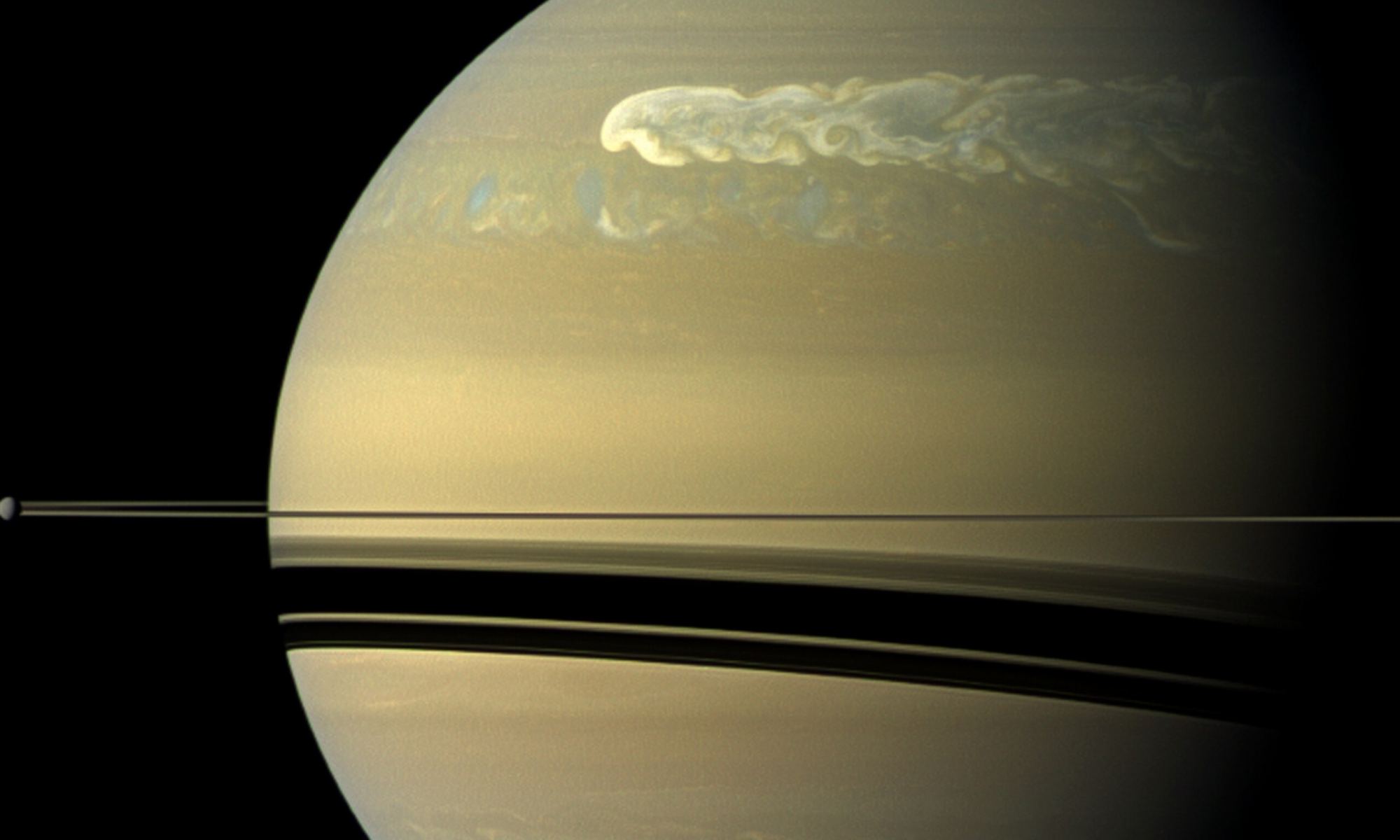Jupiter’s Great Red Spot (GRS) is one of the Solar System’s defining features. It’s a massive storm that astronomers have observed since the 1600s. However, its date of formation and longevity are up for debate. Have we been seeing the same phenomenon all this time?
Continue reading “The Great Red Spot Probably Formed in the Early 1800s”Storms on Saturn Can Have Impacts That Last for Hundreds of Years
The Great Red Spot of Jupiter is a storm that has raged for hundreds of years. It was first observed by Gian Domenico Cassini in 1665, and except for a period between 1713 to 1830, it has been observed continuously ever since. Even if Cassini’s storm is not the one we see today, the current red spot has been around for nearly two centuries. While great storms appear now and then on Saturn and other gas planets, they don’t have the staying power of Jupiter’s great storm. Or so we thought.
Continue reading “Storms on Saturn Can Have Impacts That Last for Hundreds of Years”Stare Straight Down Into a Giant Storm on Jupiter
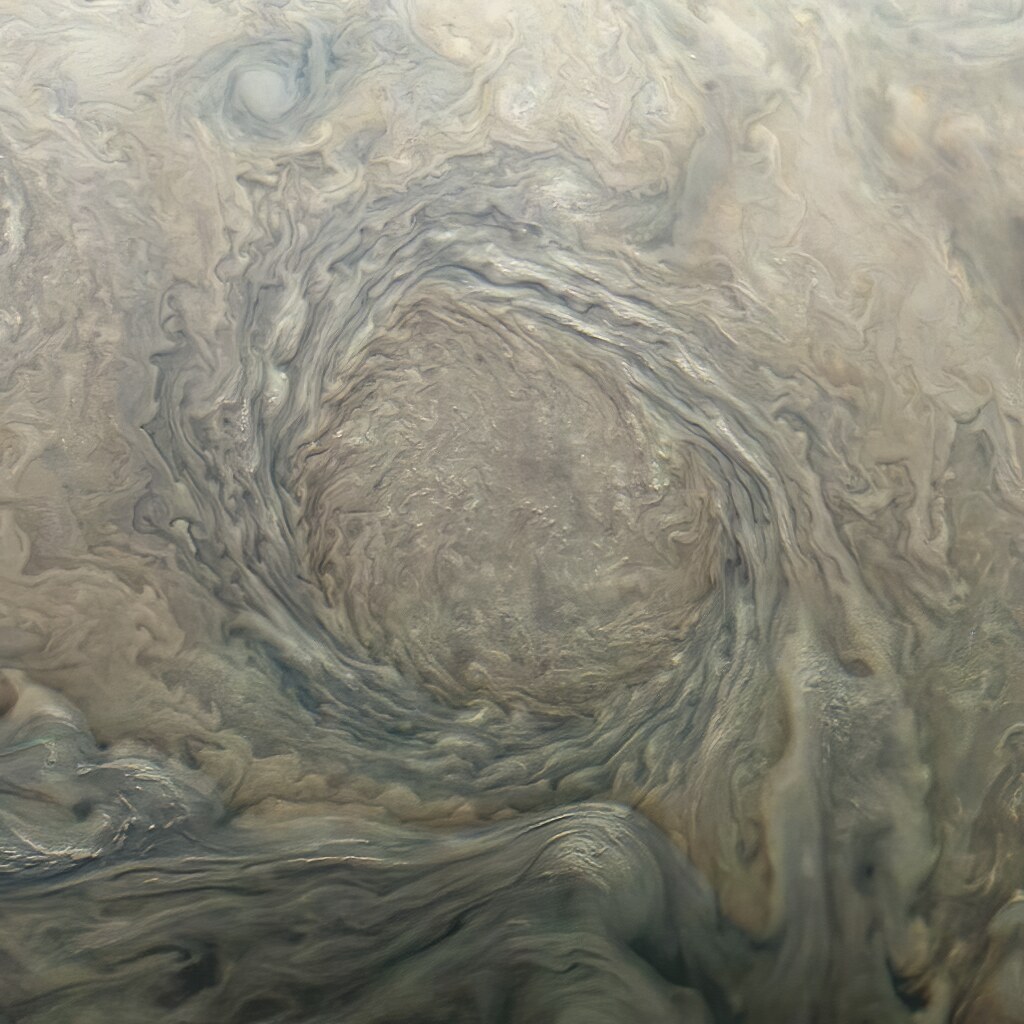
A new batch of images recently arrived at Earth from JunoCam, the visible light camera on board the Juno spacecraft at Jupiter. The camera has provided stunning views of the gas giant world since the spacecraft’s arrival in 2016. Citizen scientists and imaging enthusiasts act as the camera’s virtual imaging team, participating in key steps of the process by making suggestions of areas on Jupiter to take pictures and doing the image editing work.
This lead image, edited by Kevin Gill, is another stunner: a look straight down into a giant storm.
And we like Kevin’s attitude about this whole process:
Continue reading “Stare Straight Down Into a Giant Storm on Jupiter”Spacecraft and Ground Telescopes Work Together to Give us Stunning New Pictures of Jupiter
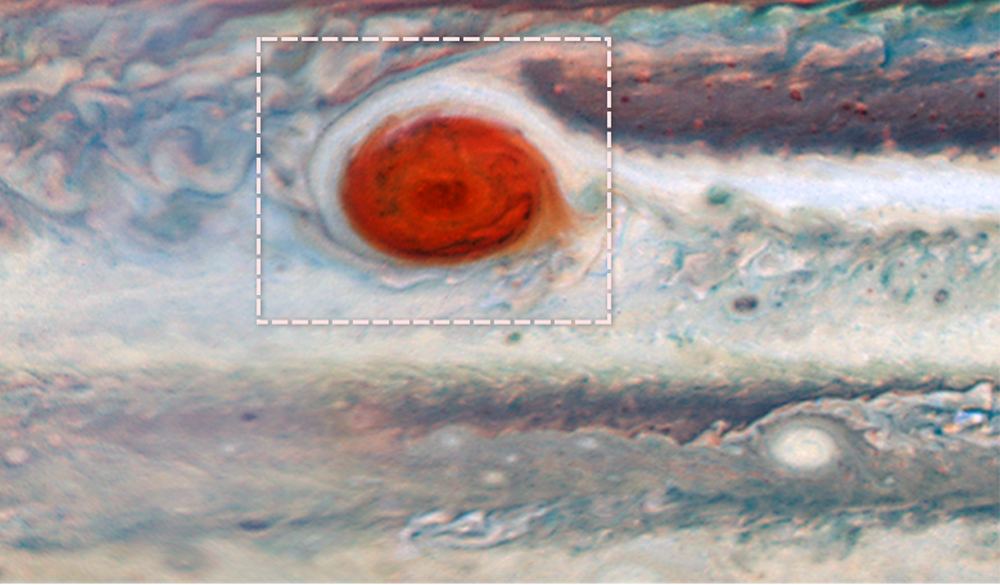
It’s difficult to imagine the magnitude of storms on Jupiter. The gas giant’s most visible atmospheric feature, the Great Red Spot, may be getting smaller, but one hundred years ago, it was about 40,000 km (25,000 miles) in diameter, or three times Earth’s diameter.
Jupiter’s atmosphere also features thunderheads that are five times taller than Earth’s: a whopping 64 km (40 miles) from bottom to top. Its atmosphere is not entirely understood, though NASA’s Juno spacecraft is advancing our understanding. The planet may contain strange things like a layer of liquid metallic hydrogen.
Now a group of scientists are combining the power of the Hubble Space Telescope, the Gemini Observatory and the Juno spacecraft to probe Jupiter’s atmosphere, and the awe-inspiring storms that spawn there.
Continue reading “Spacecraft and Ground Telescopes Work Together to Give us Stunning New Pictures of Jupiter”New Storms on Jupiter Look Like Mickey Mouse
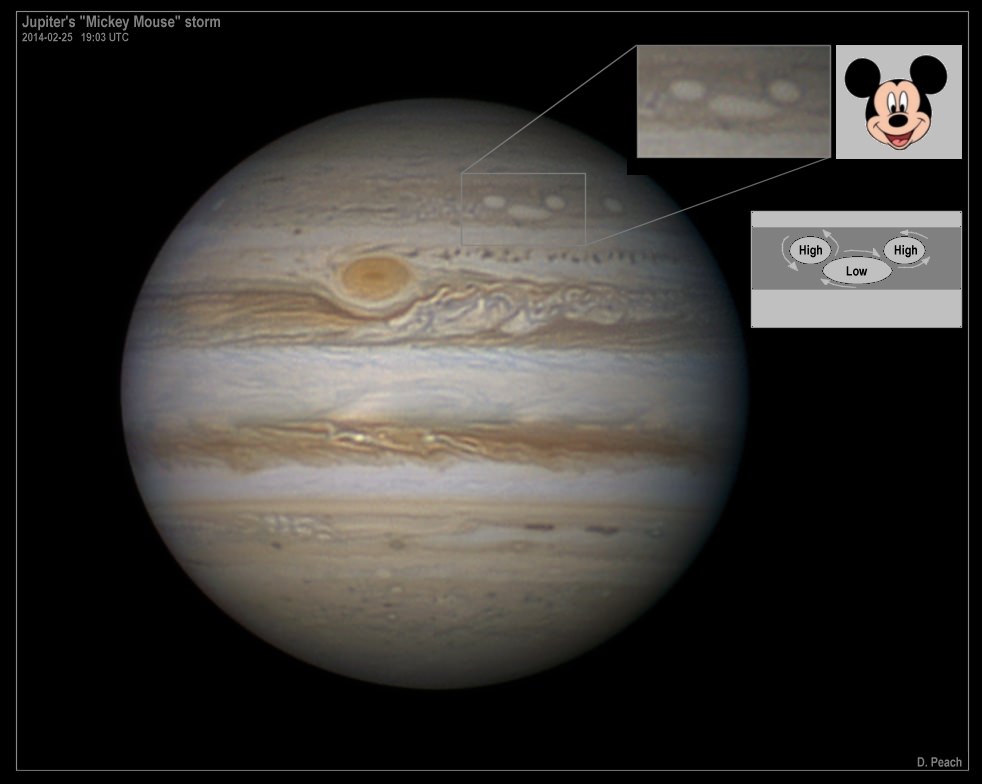
We told you this was going to be a good season to observe Jupiter, and astrophotographers in the northern hemisphere have been making the most of this time of opposition where Jupiter has been riding high in the sky. What we didn’t know was that there was going to be a familiar face staring back at us.
A combination of three storms has been noted throughout this Jupiter observing season for its resemblance to Mickey Mouse’s face (at least in outline), and astrophotographer Damian Peach has captured some great images of these storms, along with the iconic Great Red Spot, its little brother Oval BA and other turbulence. Damian has also put together a stunning movie (below) showing about three hours of rotation of the king of the planets.
Damian explained the Mickey Mouse storms are two anticyclones (high pressure regions) that form the ears while a longer elongated cyclone (low pressure) forms the face.
The abundance of storms on Jupiter are a result of the planet’s dense atmosphere of hydrogen and helium and large gravitational field. Storms on this planet are likely the strongest in the Solar System.
Jupiter reached its most northern point for 2014 at a declination of +23.3 degrees on March 11, but it’s still easily visible since it is the brightest starlike object in the evening sky.
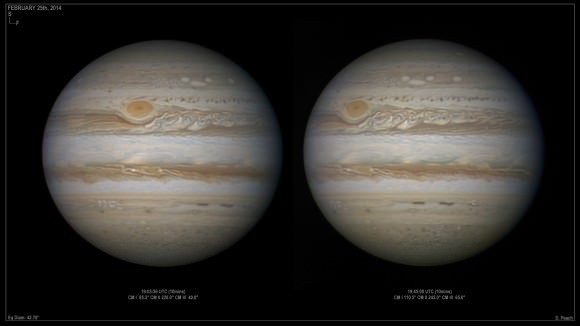
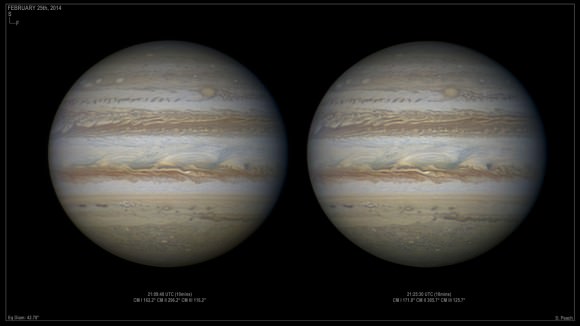
As David Dickinson mentioned in his article on observing Jupiter, we’re also in the midst of a plane crossing, as the orbits of the Jovian moons appear edge-on to our line of sight throughout 2014 and into early 2015.
Damian captured this great transit of Europa earlier in February:


